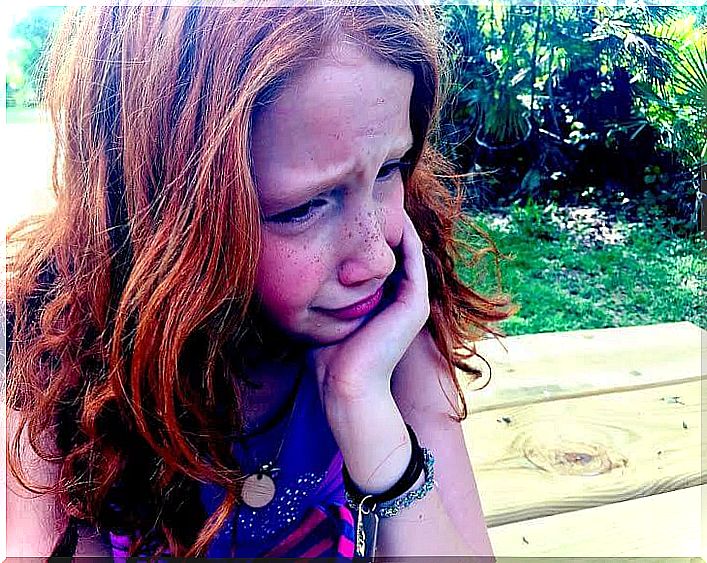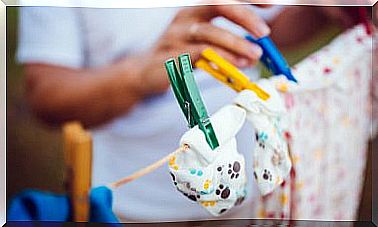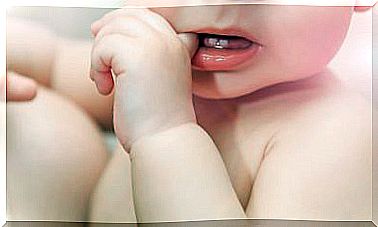13 Phrases To Calm An Anxious Child

Most of the little ones experience anxiety during their development. An anxious child may become paralyzed by changes in his family environment or routine, but may also feel irrational fears created by his fantasy.
The essential thing is to calm the anxious child to prevent him from becoming a fearful and apprehensive boy over time. However, you must have a strategy capable of combating their anxiety, which does not consist in minimizing or denying it, but in validating it, teaching the child to manage their emotions.
That is why, in this You Are Mom article , we share the phrases that positive psychology contributes to calm an anxious child. With them, your child will be able to identify, accept and work on their anxiety, that unpleasant and limiting feeling.

Help the anxious child
There are several signs of anxiety that the child can manifest : constant worry, rejection of certain activities, physical pain, increase or loss of appetite, exaggerated searches for care or biting nails are some of them.
Regardless of the reason for that feeling or the way you express it, there are many things you can do to help these anxious children, but the starting point for you to channel that emotion is dialogue. Precisely through words you can calm your child, so these phrases can be very useful.
Phrases to calm and accompany
- “I’m here; you are safe ”. When you notice the first signs of anxiety in your child, hug him and convey security through this phrase. Thus, your brain will calm down and manage to dilute that anxiety that was affecting you. You can even stay with him for a while so that he benefits from your presence and company.
- “I went through that too. ” It is worth confessing to the child that we once experienced that overwhelming anxiety that made us feel saturated with our own thoughts. In this way, your child will understand that he is not alone and that what is happening to him is not unusual, in addition to focusing his attention so that he forgets his concern for a moment.
- “We are an inseparable team.” If the anxious child hides behind a certain fear of abandonment or suffers “separation anxiety”, it is essential that you make use of this phrase to remind him that he can always count on you since you will be his safe haven.
- “Let me hug you.” Whether it’s a hug from the front or from behind, and even sitting on your lap, it will be of great help to the anxious child as physical contact is an opportunity for your child to relax and experience security.
- “Worries can be good times.” Children who suffer from anxiety often feel bad for not accepting that feeling since their parents classify it as negative or inappropriate. Although it is not a pleasant emotion, it should not be repressed or minimized. Validate these feelings of your child, explaining that the worries can be good sometimes or excessive other times, so it is better to establish an action plan to give a solution.

Questions to distract yourself
- “If what you feel is a monster, what would it look like?” The fact of characterizing anxiety implies turning a confused feeling into a concrete and palpable one in order to be able to talk about it.
- “What’s the worst that can happen?” As anxiety is a state of negative expectation, the child senses something bad but cannot accurately predict what will happen. Then, it is best for the child to identify his worst fears and nightmares to dissolve that state when he understands that it is an unfounded feeling.
- “What strategies can you use to calm yourself?” It is not a bad idea to make a list of strategies that can bring calm together. Appealing to art, practicing some physical activity, drinking water, playing or simply talking can distract the little one. So if he feels anxious, encourage him to practice the chosen strategy.
- “Remember when…?”. Childhood anxiety tends to erase memory with a stroke of the pen, since the concentration is on the current bad moment. However, they have probably gotten through tough times in the past, which is good to remind you of right now. Achievements in front of the dentist, the first day of school or another challenge overcome will allow the child to regain control and self-confidence.
Proposals that motivate activities to calm the anxious child
- “Draw how you feel” or “Draw your fear.” Drawing, coloring or scribbling has a surprising calming effect, which could well be used for your anxious child, who will also be able to express his emotions through this activity. In front of the “finished work”, help your child to understand his own representation (“what strong lines!”, “You used a lot of black” or “why does the child have that face?”).
- “Take a deep breath.” With anxiety, the creature’s pulse quickens and its breathing becomes short, which is perceived by the brain as a dangerous situation. For this reason, a good option is to teach your child breathing techniques.
- “Let’s count until …”. When the little one becomes aware of anxiety, it increases it. Then the best thing is to divert the attention of the anxious child and, for this, you can ask him to count (people, cars, children, dogs, etc.). Another option is the phrase “Let me know when two minutes have passed” , capable of diverting your attention to focus on the movement of the clock hands for a certain period of time, relaxing the mind.
- “Let’s squeeze this ball of tension together.” If the baby directs his anxiety to a ball of tension, they will experience emotional relief. With a ball or a little plasticine you will achieve the same result.
As you can see, many phrases can guide the dialogue with your child, but remember to look for words and strategies that are more suitable for him. Also, do not forget to always include high doses of love and tenderness, without falling into overprotection. And you, what do you do to help your child calm his anxiety? What do you think of these techniques?









